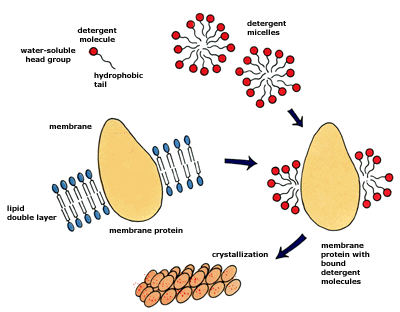The first crystals of membrane proteins
An important step in biochemical research was taken in 1980 when Hartmut Michel managed to crystallize a membrane protein (bacteriorhodopsin) after having solubilized the lipid bilayer of the membrane with a detergent. Detergents, which are structurally similar to membrane lipids, form micelles in water. They bind to membrane proteins with their fatty, hydrophobic tails creating an environment which mimics that in the membrane. Michel found a method to crystallize such protein-detergent complexes. Two years later a definitive breakthrough took place as Michel succeeded in crystallizing the reaction center from the photosynthetic bacterium Rhodopseudomonas viridis.

Nobel Prizes and laureates
Six prizes were awarded for achievements that have conferred the greatest benefit to humankind. The 12 laureates' work and discoveries range from proteins' structures and machine learning to fighting for a world free of nuclear weapons.
See them all presented here.
